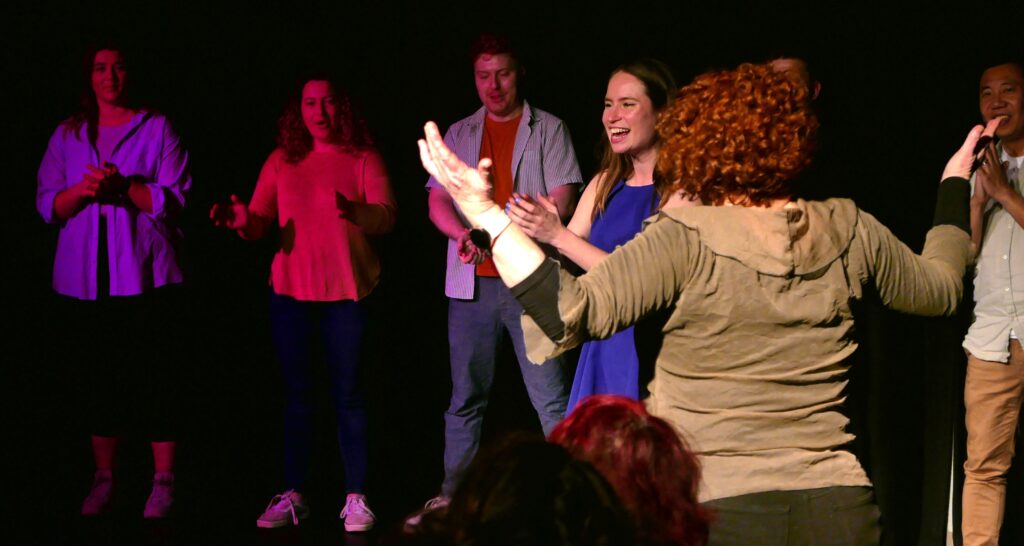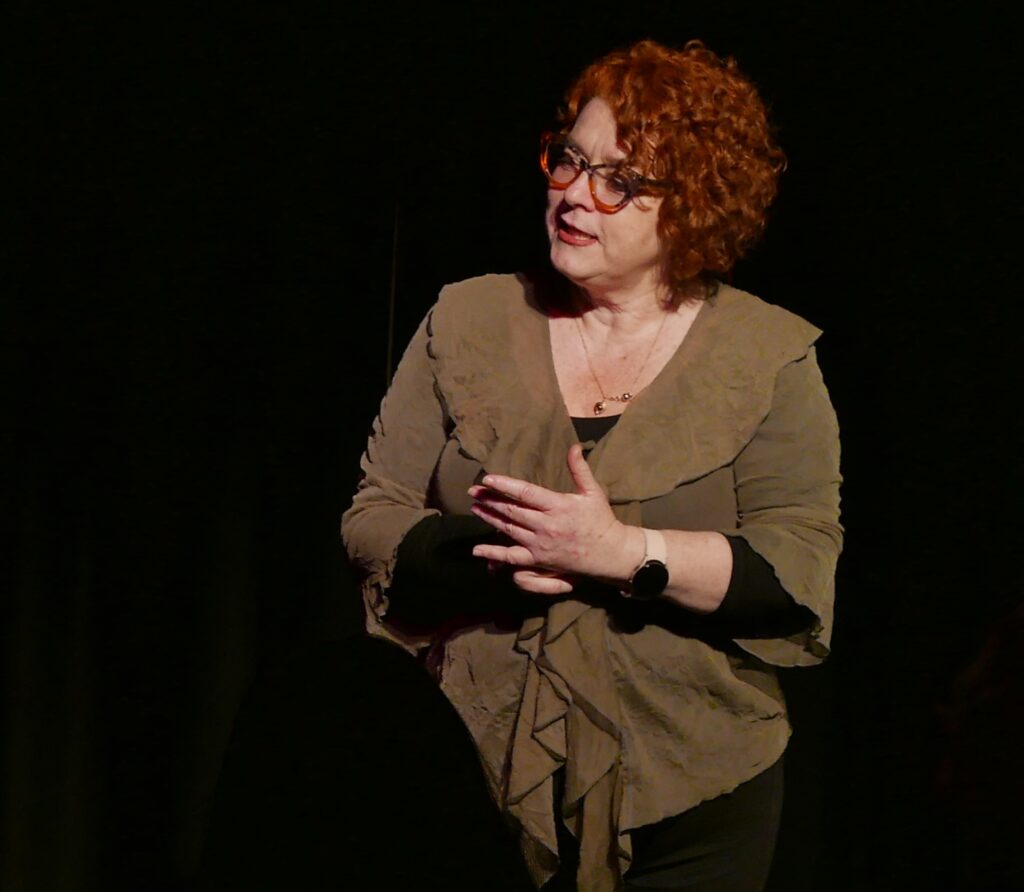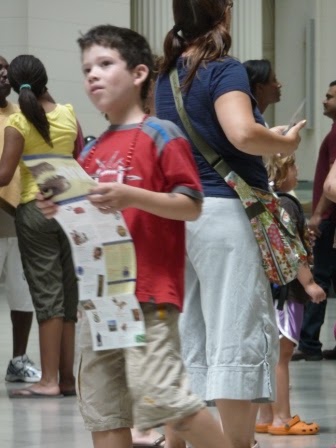did a great workshop today with lisa linke. she was clear, prepared, had plenty of examples and her training was well-structured. this was additional to the iO 5 week curriculum, so it was a whole new class, but around 6 of the 14 people in the workshop were from my class.
Beginnings: it’s there in the first 2 – 3 lines (just validate this)
lisa set up a series of conflict scenes, not because it makes a good scene, but because she says it usually gets a lot of information about the relationship, your wants and who you are out quite quickly.
after a warm up where we learnt each others’ names, she set up a conflict situation (there is one pizza coupon for 1 pizza topping, one of you is vegetarian, one of you is not, you are hungry).
After 2 – 3 lines she stopped the players and asked us as the audience what we already knew. We were able to recite a whole heap of information, not just who was the vegetarian, but whether they liked each other, who had the higher status, the character quirks of the 2 people. From just 2 lines.
The instructions then were to just make clearer anything the audience was murky on (one guy said “do i look like i need pizza”, but it wasn’t clear whether he was fat or skinny from this, only that there was a body issue).
essentially every scene was like this – within 3 lines the audience knew something about each character, their deal, their relationship – even if there was no clear CROW. they are filling in a lot of blanks.
middles: the game(s) of the scene
the game of the scene is about leveraging any patterns – the audience is pleased to see it repeat (think of warner bros cartoons where the same patterns of status / rage etc are repeated over and over). audience equally pleased to see it broken once it has been established
gotta keep your want from the beginning (don’t give up on it, maybe give in for now)
invention (which she called “getting plotty”) is when a player doesn’t like what they’re doing, and is looking for something to add – go back to who you are, what you know and what your thing is, just keep playing the game of the scene (i’m the one who gets scared when they mention bears; i’m the one who says “it will be alright” when clearly it isn’t; i’m the one who drops things). being in discovery rather than inventing requires us to be vulnerable, and this is why people tend to get plotty
if it happens more than once, it’s a game (then make it happen at least 3 times) the audience is begging for it to happen again (e.g. he’s incompetent, show he’s more incompetent)
the game as indulging audience’s schadenfreude (delight in seeing others suffer)
keep on heightening, heightening heightening until someone edits
following plot in a harold narrows it, we have to invent to get out of it. following themes / relationships / tangents widens it out. Make a lateral move, not a literal move
ends: editing a scene
we looked at beats within scenes – when soething changes or shifts (theatrical beats, not chapter/beats) – a new beat is when a new piece of information is introduced, when there is a shift in mood or tone (e.g. “i have something to tell you” / “i have a confession to make” is usually a new beat)
beat changes are the time for an edit
also edit on high, low, clear things, a multi-option “mystery” (will he go left, right or straight ahead, will she stay, leave or kill him or something else?)
don’t edit when a scene isn’t on its feet, or when it’s in trouble
important that you don’t miss the ending (don’t want to feel the scene has been revived, dragged out, revived, dragged out… )
lisa had us all edit if one person edited – gave a full group-feeling to the edit. probably gave a good reason to move and therefore engage the kinesthetic as well as the auditory-digital senses.
some general notes:
iO doesn’t do “yes and”, they rely on a state of agreement on the reality (if someone says “i’m gonna kill myself”, the reply “yes and I’ll get the bullets” isn’t necessarily in that reality, it’s more normally “no, you have so much to live for”).
the best choice is ANY choice – it gives info about your character and their relationship.
generally iO doesn’t do conflict scenes, they try to do slice of life scenes – they don’t aim for drama they aim for truth in comedy (or comedy in truth) the funny things that happen when people “bump into” each other
it’s essential to keep with your own “want” from the first few lines.
in an organic game, you are doing it right if you have no idea what is going on
first beats in a harold should be 3 – 3.5 minutes long, 2nd beat shorter, 3rd beat shorter again
no tag outs or walk ons in first beat
on the back line: stand with open arms, not crossed arms – ready to edit
we don’t make movies, we make art – don’t make it totally predictable






